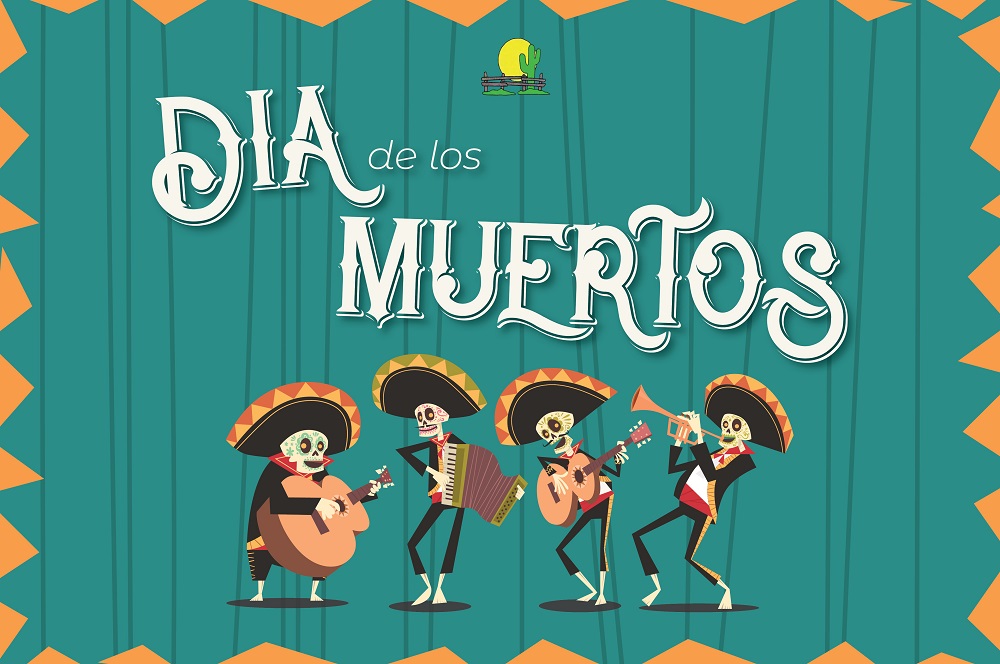[vc_row css_animation=”” row_type=”row” use_row_as_full_screen_section=”no” type=”full_width” angled_section=”no” text_align=”left” background_image_as_pattern=”without_pattern”][vc_column][vc_row_inner row_type=”row” type=”full_width” text_align=”left” css_animation=””][vc_column_inner width=”1/2″][vc_column_text]Día De Los Muertos, or Day of The Dead in English, may sound as if it is a bleak occasion- one dedicated to mourning and loss. And its proximity to Halloween might make it seem reminiscent of this much spookier holiday. However, this day for the deceased is far from such assumptions. Dia De Los Muertos celebrated on November first and second is a day of vibrant, colorful, and lively festivities. Celebrated in Mexico and other Latin American countries, this holiday aims to demonstrate love and respect for those who have passed away. And doing so calls for festive parties, parades, and beloved traditions.[/vc_column_text][/vc_column_inner][vc_column_inner width=”1/2″][vc_single_image image=”2153″ img_size=”full” qode_css_animation=””][/vc_column_inner][/vc_row_inner][vc_empty_space][vc_column_text]
History:
[/vc_column_text][vc_empty_space][vc_column_text]Dia De Los Muertos was first celebrated several thousands of years ago when the Aztec, Toltec, and other Nahua people reigned in Mesoamerica. They believed that mourning the dead was disrespectful. That’s because death was regarded as a natural phase in one’s life and that their passing did not dismiss them from their family’s memory. As such, the dead remained members of their community, kept alive in spirit. And on Dia De Los Muertos, they rejoined their relatives on Earth. Today, this day of the dead is celebrated as a combination of ancient, mesoamerican traditions and Christian feasts.[/vc_column_text][vc_empty_space][vc_column_text]
Important Aspects of Dia De Los Muertos:
[/vc_column_text][vc_empty_space][vc_column_text]Dia De Los Muertos is marked with celebration, traditions, colorful costumes, and of course, food. And each aspect is aimed toward the celebration of life. Here a few key elements of the holiday:[/vc_column_text][vc_empty_space][vc_column_text]
- Alters: Also known as ofrendas, these adorn homes and cemeteries to welcome deceased spirits to join in the festivities of Dia De Los Muertos. It is commonly believed that on their journey from the afterlife, spirits gain an appetite and should be welcomed with refreshments. And so these alters are accompanied by food and water, along with family photos and candles.
- Literary Calaveras: Though today it means “skull,” in the late 18th and early 19th century, a Calavera signified a satirical poem, often poking fun of the living. And today these writings remain tradition, now regularly broadcasted on television and the radio.
- Calavera Catrina: The most famous of Calaveras is that of a woman named Catrina. Although she is a mere drawing, created by cartoonist, Jose Guadalupe Posada, she personifies ostentatious wealth and prestige. Her image commentates on the equality we all share beneath our garb and trappings. And today, she remains an icon. People paint their faces like hers and dress in her famed fancy clothing.
[/vc_column_text][vc_column_text]
Food of Dia De Los Muertos:
[/vc_column_text][vc_empty_space][vc_column_text]Food is an integral part of the day’s festivities. Alters are topped with treats and favorite meals the deceased enjoyed in life. But it is not just the dead who enjoy a feast of traditional foods. The living partakes as well with items such as Pan De Muerte, sweet bread with anise seeds and decorated with bones and skulls made from dough. Drinks are also an essential part of the celebrations. Pulque is a sweet, fermented, agave sap-made drink. Atole is a delicious porridge, made with cornflour, sugar, and cinnamon. Even hot chocolate is a favorite on this day, especially in the midst of cold November weather.[/vc_column_text][vc_empty_space][vc_column_text]
[/vc_column_text][/vc_column][/vc_row]


